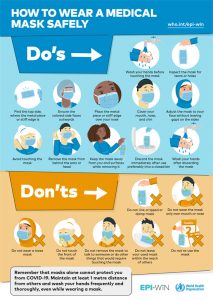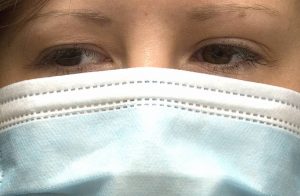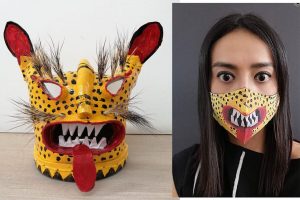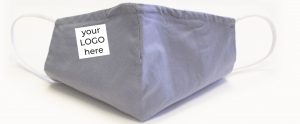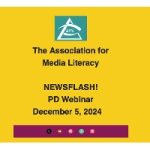Masking and Unmasking
by Irene Faiz
This media literacy unit on COVID-19 masks was designed for a Grade 10 Secondary English class. I plan to use many of these activities when I teach Visual Arts in upcoming quadmesters this school year.
Tech notes:
These documents were built using Google tools. As such, they will ask you to open them as copies of Google Docs and Slides, which you can then use as-is or revise as needed. It is recommended that you ‘open in a new tab’ so that you can stay on the Masking and Unmasking page. Teachers needing other formats can convert them to their preferred formats. e.g., pdf, Word, etc.
Irene Faiz also guested on Mediacy, The Association for Media Literacy podcast, providing her observations on the art and politics of pandemic face masks. The podcast can be an additional educational experience for students and can be found here.
This ambitious and rich unit integrates reading, writing, art, presentation and media literacy. It describes nine sequential student activities, some with slides and some with scaffolding worksheets.
1. A pre-viewing activity helps students think about their attitudes towards face masks.
2. An infographic reading activity helps them think about visual codes and conventions.
3. A news reading activity helps students understand the inverted-pyramid news story structure.
4. A graphic reading activity helps students understand how to read graphics using media literacy concepts.
5. A compare-and-contrast activity further helps students understand visual codes and conventions.
6. A pre-production paragraph-writing activity prepares students to imagine their own mask designs.
7. A viewing activity helps students understand and apply media literacy key concepts.
8. A culminating art activity in which students apply their graphic language and media literacy learning to the creation of their own mask designs.
9. A culminating writing activity in which students reflect upon and explain their design choices.
Like most teachers during this worldwide pandemic, I started the course by reviewing the rules we need to follow for us all to be safe.
We hadn’t been together as a school community for about 6 months. All of us had been navigating life through a pandemic in different circumstances.
So, it was important to start with a “previewing” activity. This activity provides the students with a choice of three sentence-starters. They are being prompted to write three sentences on why they are wearing masks during this season of COVID-19. It was fascinating to see the responses the students wrote to these prompts. They were very honest and descriptive.
You can find the Pre-viewing Activity as a Google Doc here.
You can find the Pre-viewing Activity as a pdf here.
Then we began to practice our media literacy critical thinking skills. The posters and videos we had read and viewed on our first day of class became our material to critique. I provided the students with an online poster produced by the World Health Organization titled, How To Wear a Medical Mask Safely. The students were asked to read this poster with a different lens. They were asked questions about Text, Audience and Production. This activity gave me an opportunity to introduce the media literacy triangle to the class.
You can find the Infographic Reading activity sheet as a Google Doc here.
You can find the Infographic Reading activity sheet as a pdf here.
You can find the Media Literacy Triangle, with questions, here.
The Ontario grade 10 English course needs to prepare the students for the Grade 10 Test of Reading and Writing, so it was great to include some news articles in this curriculum unit. One article we read titled, The face mask is a political symbol in America provided an opportunity for the students to learn how news reports are written in the inverted pyramid format. The students were prompted to analyze this news article and make notes on how it is structured.
You can find the article The face mask is a political symbol in America here.
You can find the news article worksheet here.
You can find the news article as a pdf here.
This article mentioned the Spanish Flu from 1918. And there was a great critique about a poster designed for men to wear masks during that pandemic one hundred years ago. I provided this graphic. And I gave students media literacy questions once again on text, audience and production. Here is the graphic:
You can find the graphic analysis questions as a Google Doc here.
You can find the graphic analysis questions as a pdf here.
A good way to develop our visual literacy skills is by practicing compare and contrast exercises. The PING PONG comparison activity on looking at COVID-19 masks provided the students with pairs of images and then pairs of COVID-19 masks to compare and contrast.
You can find the PING PONG compare and contrast activity as a Google Slides here.
You can find the PING PONG compare and contrast activity as a PowerPoint here.
You can find the PING PONG compare and contrast activity worksheet as a Google Doc here.
You can find the PING PONG compare and contrast activity worksheet as a pdf here.
For each comparison the students are being prompted to make observations on similarities and differences in terms of physical characteristics and purpose/message. They are being prompted to use the vocabulary of the elements and principles of design. It is best to prompt this thinking and then provide the theory afterwards. When students start using words such as colour, shape, contrast and balance, the teacher can praise them and tell them that they are using the vocabulary of the elements and principles of design. The first few comparisons show obvious differences. Later in the slide show we see more subtle differences. These require more careful observation. Students can also be prompted to write compare-and-contrast paragraphs based on these notes. I assigned my English class to complete 12 sets of notes on the first 12 slides. This lesson was delivered in our live classes as well as our virtual classes.
We began each live class with a “literary quote” on the blackboard. During this unit I researched quotes about masks. One quote inspired the activity titled, Mask Memories. Oscar Wilde once said,
“Man is least himself in his own person. Give him a mask and he will tell you the truth.”
This quote gave us a chance to think about the masks and costumes we have worn during various occasions in our life. This activity asks the students to describe these costumes and write a paragraph on how this costume helped them “be themselves.” The task also connects to the media literacy key concept, “Media construct versions of reality.”
You can find the Mask Memories worksheet as a Google Doc here.
You can find the Mask Memories worksheet as a pdf here.
After viewing many different types of COVID-19 masks during the PING PONG comparison, I found myself thinking that it would be useful to create another slide show that intentionally tasked the students to notice each of the eight Media Literacy Key Concepts.
COVID-19 Masks : Media Literacy Key Concepts provides this thinking challenge. The first three examples of COVID-19 masks in this slide show are videos of the use of the mask or the misuse of the mask and advertisements of masks. The consequent images also illustrate each key concept.
You can find the Key Concepts slide show as a Google Slides here.
You can find the Key Concepts slide show as a PowerPoint here.
You can find the worksheet as a Google Doc here.
You can find the worksheet as a pdf here.
By this point in time, the students were ready to work on their creative production activity. This activity asks students to analyze and then design a COVID-19 mask for a particular institution (Option One) or social movement (Option Two). According to which of these options they choose, they are given questions on analysis and design.
You can find the creative production activity as a Google Doc here.
You can find the creative production activity as a pdf here.
This production activity also provides an opportunity for the students to prepare an oral presentation. The students were provided with a rubric on how their final creative COVID-19 mask will be evaluated. They were also given the rubric by which the oral presentation would be assessed.
When we ask our students to create, they are having an authentic learning experience. So, they will have something to say about this learning experience and they will have something to write. I prepared a worksheet that prompts the students to write three related paragraphs based on their creative production.
You can find the three-related-paragraphs worksheet as a Google Doc here.
You can find the three-related-paragraphs worksheet as a pdf here.
The first paragraph asks them to describe their creative COVID-19 mask. They are being prompted to describe its purpose and message by referring to the imagery and text and the elements and principles of design they have used. The second paragraph prompts the students to identify which media literacy key concept their creative production illustrates. This exercise will help them gain confidence in talking about the media literacy key concepts. They were instructed to use notes on writing these two paragraphs to prepare for the oral presentation of their creative COVID-19 mask.
The third paragraph prompts them to find an existing COVID-19 mask and compare it with the one that they have created. They have had lots of practice in making compare and contrast observations by completing the PING PONG Comparison earlier. This paragraph was not required for the oral presentation in my class. Use it as you’d like according to your schedule and curriculum expectations.
All of these lessons were delivered during our in-person and virtual classes. The students were engaged and participated with enthusiasm. The presentations also allowed the students to learn about each other’s passions and interests. This is another way of creating community in our classroom. By giving our students choices, they are being permitted to reflect on their culture and interests and they are being challenged to understand each other respectfully.
Thank you to Neil Andersen for the thorough research that he shared on COVID-19 masks around the world. Thank you for the articles and images. Thank you to Carol Arcus and Neil Andersen for their thoughtful critique of these fascinating constructions of our current reality.

